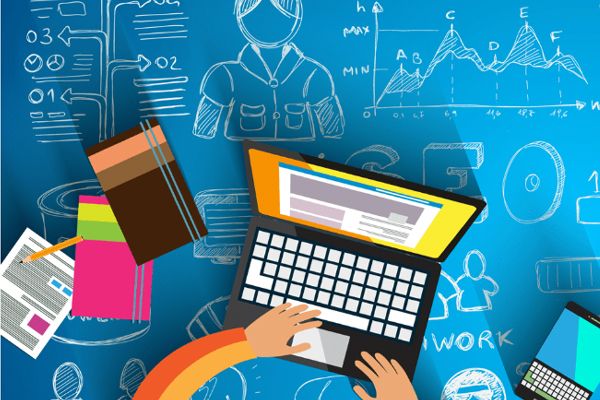Designing a Differentiated Lesson Plan
By: Tanya Reyes
Readiness, Interests, Learning Styles
When differentiating lessons, it is imperative that teachers consider the readiness, interests, and learning styles of the diverse members of the classroom community. This particular class has several students with individualized education plans (IEPs) in all subject areas, multiple English language learners (ELLs), students receiving speech and behavior therapy, a gifted student, and various learning styles and proficiency levels. Colquitt et al. (2017) describes student readiness as the sum of prior experiences, attitudes, and abilities. Keeping this in mind, it was necessary provide a broad, yet familiar, topic that could be modified to meet the unique levels and lives of every student. Using the prompt of describing a trip they've experienced and many options for delivering their ideas, both written and orally, students can discuss a topic that interests them specifically whether they want to write about a field trip to the zoo because they love animals or a family vacation to Disneyland. Activating students' prior knowledge through thinking maps and sparking their interest with a presentation of a completed project, prepares and motivates students to participate (Murawski & Scott, 2019).
Content is easily accessible to all learners through the various formats provided. For example, visual learners are supported through the use of videos, images, diagrams, and thinking maps; auditory and verbal learners are supported with explanations, cooperative learning structures involving sharing ideas with partners, digitally recording their thoughts, and providing feedback to peers; and movement is provided for kinesthetic learners through Total Physical Response (TPR), Kagan learning strategies such as Stand Up, Hand Up, Pair Up, "Snowball Fights", and sorting activities (Murawski & Scott, 2019). Allowing student choice in the specific topic being written about and the format for displaying their narrative increases intrinsic motivation and further sparks student interest (Murawski & Scott, 2019).
Differentiating Learning Goals
 |
| (image retrieved from https://www.forbes.com/sites/mikekappel/2020/12/10/become-a-pro-at-setting-business-goals-in-the-new-year-with-these-6-tips/?sh=54415f5c3900) |
Colquitt et al. (2017) states the differentiated instruction focuses on the individual nature of learning and modifications should be focused on individual appropriateness rather than age appropriateness. This can be done by setting realistic, short-term, measurable goals for individual students and providing them with the necessary supports to reach them. Educators can modify the requirements for each student while still having them master the standard through either increasing the sentence or paragraph requirements for highly proficient students and reducing them for minimally proficient learners.
ELLs and students with special needs require various accommodations to support them with understanding the content, managing their executive functioning skills, and demonstrating their understanding (Murawski & Scott, 2019). Allowing ELLs to use their home language or draw pictures in the initial stages of the writing process will encourage them and aid in their academic success. Students with special needs can be supported with the checklists, thinking maps, sentence frames, word wall, and ample modeling and examples.
Early finishers and gifted students need opportunities to dive deeper into the content rather than just being given busy work (Murawski & Scott, 2019). Giving these students more complex writing strategies to test out in their narratives such as dialogue or figurative language will allow them to advance their current writing abilities up the standards and stay engaged while other students finish their writing projects as well.
Technology
 |
| (image retrieved from https://digitallearning.eletsonline.com/2020/12/ed-tech-revolution/) |
Using technology can support student self-regulation, motivate students, and ensure comprehension of new content. Assistive technology like text-to-speech, speech-to-text, and Google translator can aid students in their ability to share their ideas and complete their assignments. Online learning videos such as BrainPOP, can build vocabulary and content knowledge through an engaging format and can be played at a slower rate with subtitles to assist English language learners and students with speech and communication needs. Santori and Smith (2018) say that students are more engaged and learning improves when they are able to explore various tools, select their resources, choose the process and product they create, and work collaboratively. Educational technologies such as FlipGrid, Book Creator, Powtoon, and Prezi give students the chance to determine the best format for which they want to present their narratives based on their learning styles and needs. Whether they prefer writing, speaking, building, or directing, students can transform their narratives into a work that is unique to them.



Comments
Post a Comment